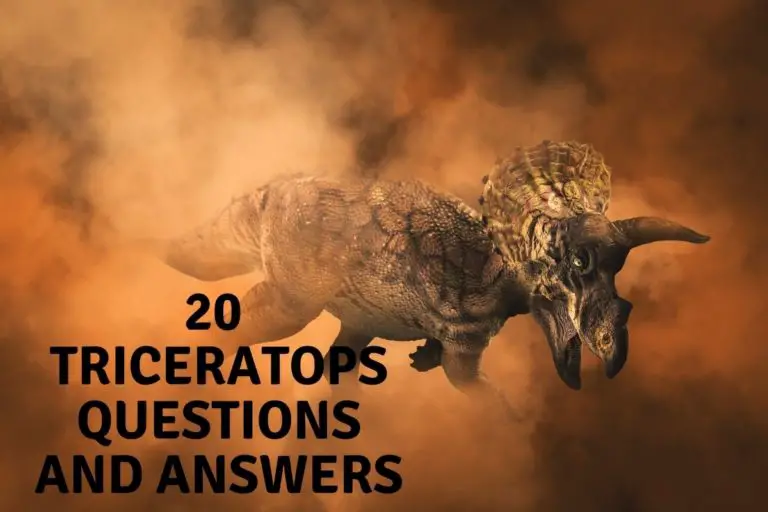What was The Elephant Bird: 15 Facts
Not all that was large and ferocious looking was a dinosaur, and in fact up until 300 or so years ago we had animals alive that could easily be mistaken for them. One of these was the huge Elephant Bird. Sadly not with us any more, and we look at the reasons why below, it would have been an incredible sight in the jungles of madagascar.
The Elephant Bird was a flightless bird native to Madagascar. It could be up to 10ft tall, weigh 1600 – 1900 lbs and laid the largest eggs ever known – nearly 10 times larger than an ostrich egg. It went extinct between 400 and 1000 years ago due to climate change, deforestation, hunting and eating of its eggs.
We say sadly not here anymore as it was a victim of human expansion and if not completely hunted to extinction then the removal of its habitat by humans would have certainly been the additional factor in its disappearance. As we can no longer see a living Elephant bird, although you can see preserved ones in museums and the kiwi bird is its only close living relative, we give you some facts about this flightless wonder below.
What was the Elephant Bird.
The Elephant bird was the heaviest, and arguably the tallest, bird to ever have lived. It could grow to 10 feet tall and weigh at the top estimates up to 1900 lbs ( or 860 kg). Its eggs were the largest of any known species, including dinosaurs. It has only been found on the island of Madagascar, although similar species have been found in New Zealand and Australia.
It resembled a very large Ostrich, and was a herbivore eating fruits and seeds from the trees and floor of the jungle. It is related to the Kiwi bird from New Zealand.
It likely went extinct around 1000 years ago, although there are reports of large birds from both Marco Polo in the 13th Century, and more recently up till the 1660s. whether these were actually sightings or stories passed on from folk law it is difficult to prove.
15 Facts about the Elephant Bird
- The elephant bird was a flightless bird native to Madagascar that resembled an ostrich or another extinct flightless bird the Moa .
- Its scientific name was Aepyornis maximus which means Great High Bird in Latin and it certainly was. It was a ratites which means it was flightless, long necked and long legged and shares this with the Cassowary, emu kiwi and the ostrich as we mentioned above.
- It was one of, if not, the largest birds to have ever lived, and estimates have varied that it could be up to 10 feet tall and weighed between 770-1100 lbs,(340 kg – 500 kg with large individuals possibly weighing up to 1900 lbs ( 860 kg)
- it was first thought there might be 13 different species of Elephant birds native on madagascar, but this has been lowered in recent years to 4-8 distinct species.
- The species is believed to have gone totally extinct in the middle of the 17th century, (possibly) but after humans settled on madagascar around 2500 years ago, it was in terminal decline and pretty much extinct by 1000 years ago for all purposes.
- Its Extinction was probably caused, although not solely through hunting, due to habitat loss and some hunting by humans. Though not perhaps the adult bird, that kick would be pretty impressive, but the eggs of the elephant bird.
- Even though they look like they should be at least omnivores it is thought that Elephant birds were actually herbivores and would have eaten fruit, nuts and seeds that were in reach or on the jungle floor.
- Marco Polo is credited for naming them, in 1298, or at least inspiring the name when he described a bird that could pick up an elephant in its talons. He was exaggerating…. we hope!!!
- Elephant birds laid the largest eggs of any bird ever known. They could be 34 centimetres long, and weigh up to 22 lbs ( 10 kg) to put it into comparison that’s about 160 chicken eggs!! Bigger eggs than even the dinosaurs!
- At the time there were Coconut palms and other plam species were thought to make up the diet of the Elephant bird
- If you want to see an Elephant bird egg there are only a few still intact today. However the Western Foundation of Vertebrate Zoology in California, has seven of these! othersare can be found in Melbourne, Delaware, Wroclaw, Istanbul, leeds, London, Harvard and randomly in David Attenborough’s house!
- Due to their massive size the elephant bird had few predators, that is until humans turned up. However, despite their bones showing evidence of cut marks on bones ( although not as many as would be thought)
- Although humans are thought to be at least partially to blame for the extinction of humans, it has been found that humans may well have been on Madagascar further back that first thought. In fact up to 10500 years ago according to recent research. this means that the elephant bird and humans would have lived together for thousands of years before their extinction.
- A small number of subfossil remains of elephant birds have been discovered in Madagascar, and it is from these that we get valuable insights into the biology and behavior of this species.
- One day it may be up for de extinction, as we still have DNA from the elephant bird, and its close (ish) relative the kiwi. Though this is entering the realms of Jurassic Park type science fiction for the moment.

Conclusion
The elephant bird, certainly the heaviest, and up there for the tallest of birds to ever live on Earth is yet another cautionary tale of humans interacting with the natural world. We may not be responsible for hunting the Elephant bird into extinction, but the suggested wide spread collection of its eggs would have if not been the main cause, would have added to the climate change and hunting pressures it was already under.
While of course allowances can be made for humans 1000 years ago with limited to no knowledge of the damage they can do to an ecosystem, we surely can’t claim the same ignorance anymore and we watch more and more species like the Elephant bird slip into extinction due to the actions we continue to make. Yesterday the Elephant bird, tomorrow the Elephant, let’s try to act today instead.
References
- https://www.bbc.com/news/science-environment-45495400
- https://en.wikipedia.org/wiki/Elephant_bird
- https://www.science.org/content/article/new-find-clears-madagascar-s-first-settlers-wiping-out-world-s-largest-bird
- https://a-z-animals.com/animals/elephant-bird/
- https://www.britannica.com/animal/elephant-bird
- https://www.thoughtco.com/the-elephant-bird-1093723
Hi, I am Roy Ford a General Studies and English Teacher who has taught all over the world. What started as a fossil collection became a great way to teach, motivate and inspire students of all ages and all over the world about dinosaurs and from that and children’s love of dinosaurs came the site dinosaur facts for kids, a resource for all ages.






